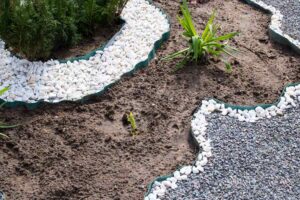Quality Residential Landscaping in Ogden, UT
Five Factors to Consider for Landscape Design

Your garden or landscaping is a major factor in the aesthetics of your home. Different landscaping design projects can help to beautify your property and increase the value of your property. Whether you are interested in commercial or residential landscaping, there are five major things to consider before starting your project in Ogden, UT.
- Budget
The first factor our team recommends addressing is budget. This one factor will determine the rest of your landscaping choices. Planning your budget can be done by first listing the changes you want to make, features you want to add, and plants you want to incorporate. Then you can calculate roughly how much the landscaping will cost with a professional or by yourself. Other important aspects to include in your estimated costs are compost, soil, labor, mulch, tools, seeds, plants, rocks, fountains, and more. If the number you end up with on the page is overwhelming, it’s best to scale back and look for ways to save money before you’ve spent it.
- Climate and Soil Types
When determining what plants and attractions to add to your landscape later, you will need to know the climate and soil types of the property and the area. Ogden, Utah, is in USDA Hardiness Zones 6a, 6b, and 7a, which will determine which plants will do best in your yard. Ogden is also located in Planting Zone 6 with a medium-length growth season, which can help you decide when to plant fruits and vegetables. Another factor that will determine which plants and attractions you should utilize will be your yard’s soil type. This will influence the plants you choose to incorporate into your design, the drainage needed, and the target pH level. If your current soil isn’t hospitable enough, it may need to be treated and converted. Other important factors that you should determine include:
- Map the area to know what you’re already working with
- Locate sunny and shady areas
- Determine the usual wind direction
- Themes
Something that can unify your garden or yard is applying a theme. This theme can be simple, such as including similar shapes throughout the design, or it can be more specific, such as creating a relaxation garden. These themes can then guide your placement, features, and plant selection. Asking yourself the following questions can be a great start to your design plan and can produce some unique landscaping ideas to determine a theme that could fit your style and property:
- What themes will enhance or match the architecture of my home or business?
- Do I enjoy more bold, geometric shapes?
- Do I enjoy softer, more natural shapes in my landscape?
- Are there specific colors that I want to include in my landscape?
- Think About the Future
By first determining the purpose of your landscaping, you can ensure that your design is sustainable in the future. When planning, imagine how the landscape design will look in a few years. For example, if you want a nice open area to host parties and guests, with easy access and visibility of every aspect of the yard, you’ll want to ensure the design you choose can sustain that for a long time. Plants and trees grow large, so if these get in the way of your open design, it is better to incorporate them on the outskirts of the design or to choose smaller varieties and plants. By thinking ahead, you ensure that your landscape will last.
- Cutting Maintenance & Costs
Thinking about the future leads directly to our next factor to consider. When designing your backyard, you want to ensure that you can afford present and current costs and the cost of maintaining the design year after year. You can reduce future maintenance costs by proactively choosing low-maintenance zeroscaping plants and features like our decorative lava rocks, river rocks, red rocks, marble chips, and boulders. This will reduce future costs on frequent maintenance, fertilizer, and pesticides. Our selection of topsoil, bark, sand, gravel, and concrete can help you create a low-maintenance, affordable oasis in your backyard.
Contact Our Rock Solid Team
If you aren’t certain which materials to use in your backyard, our Sandee’s Soil & Rock team is ready to help you choose the outdoor space of your dreams. With expert insight and ideas to suit any taste, contact us, and we can help make your vision come to life.
